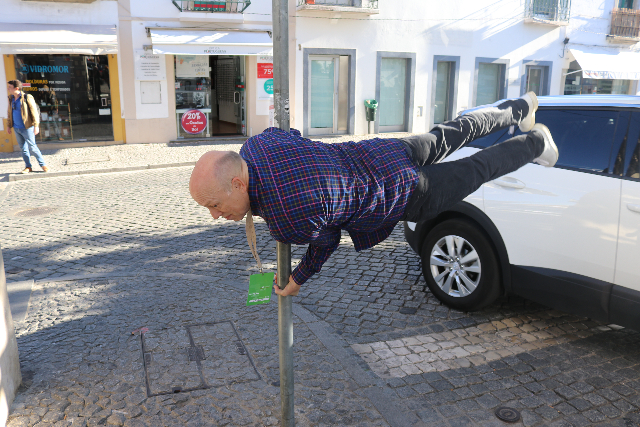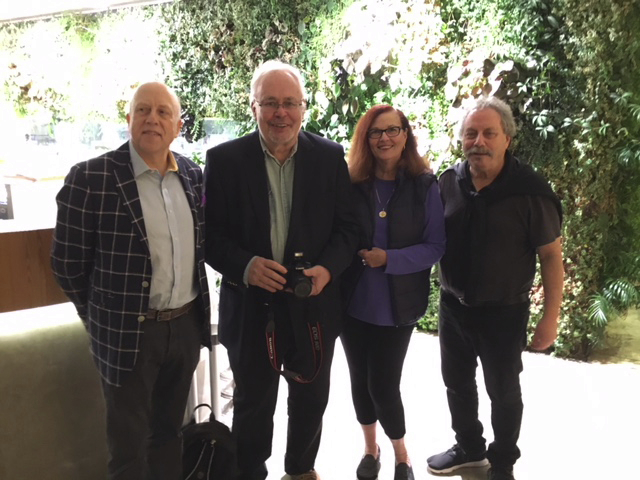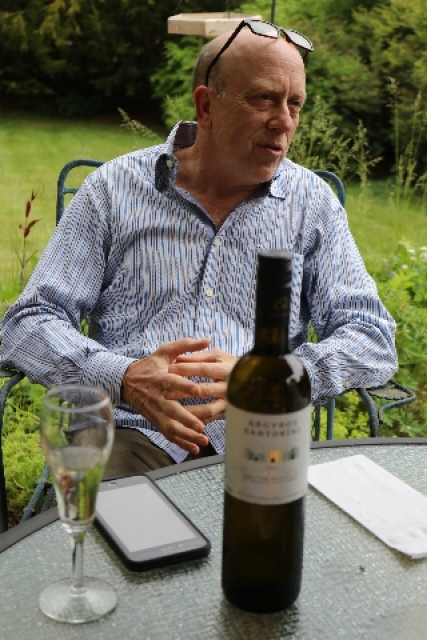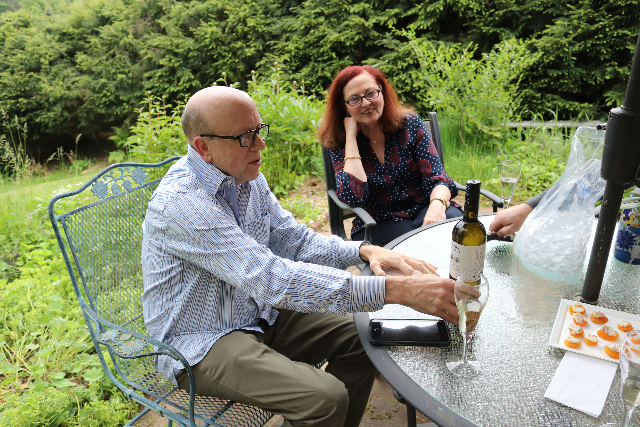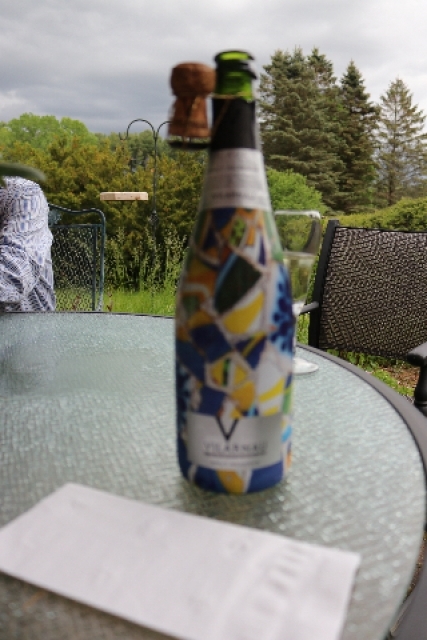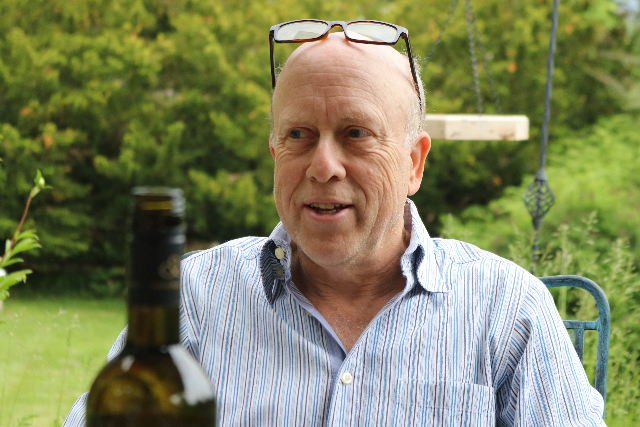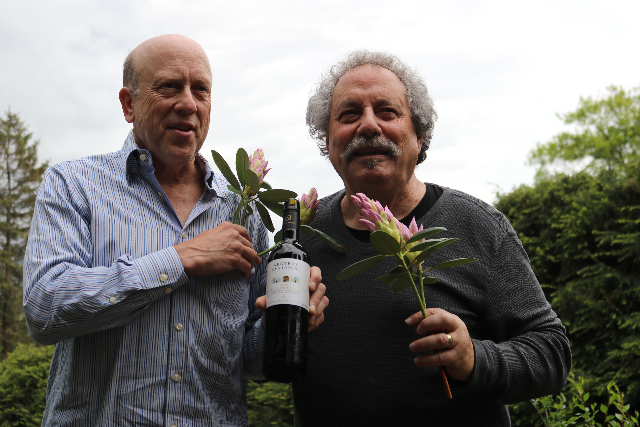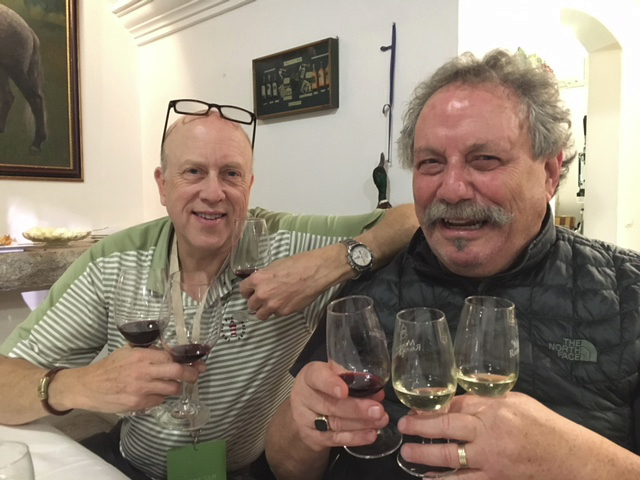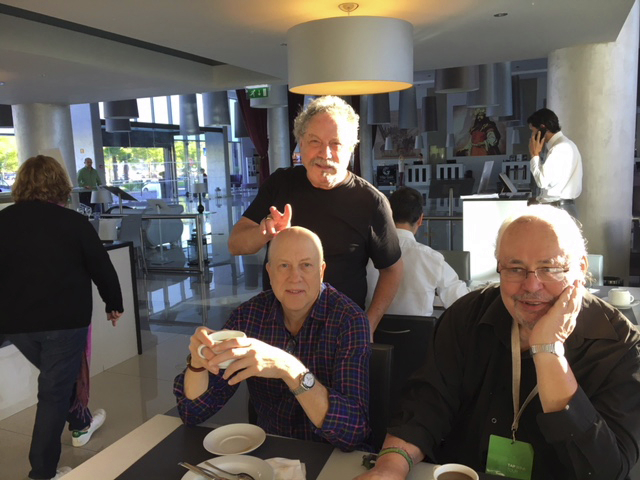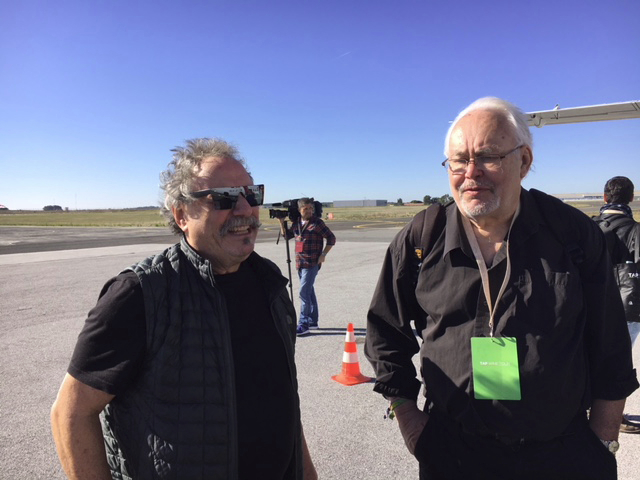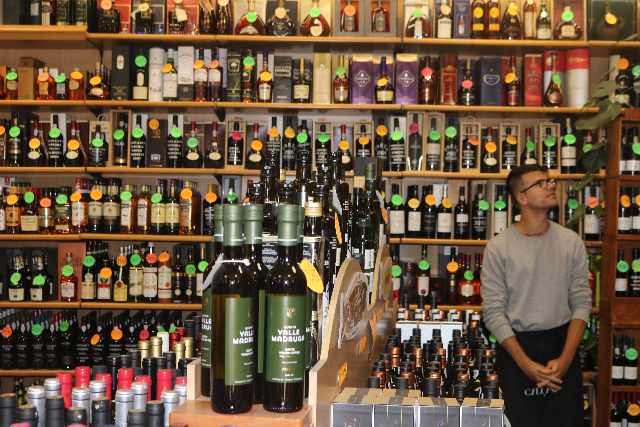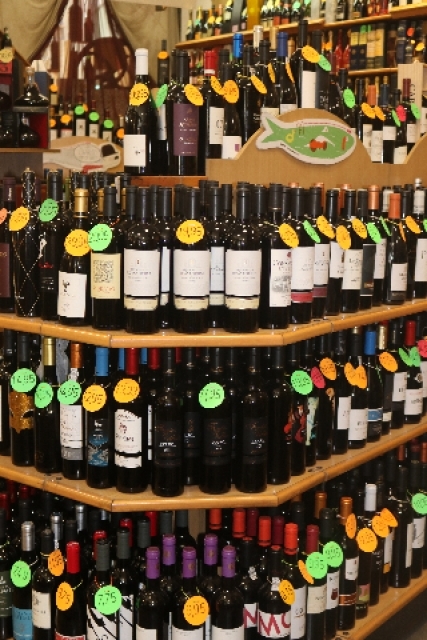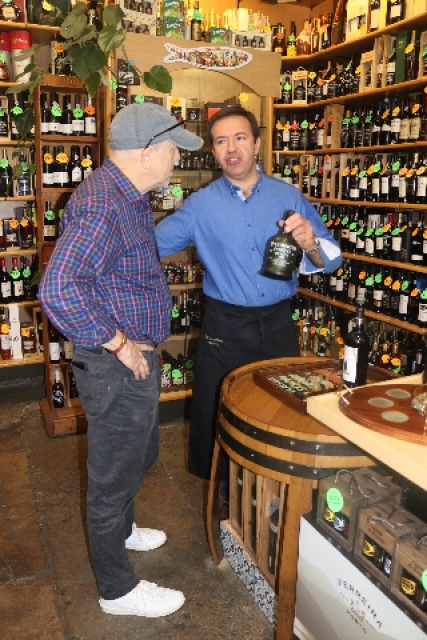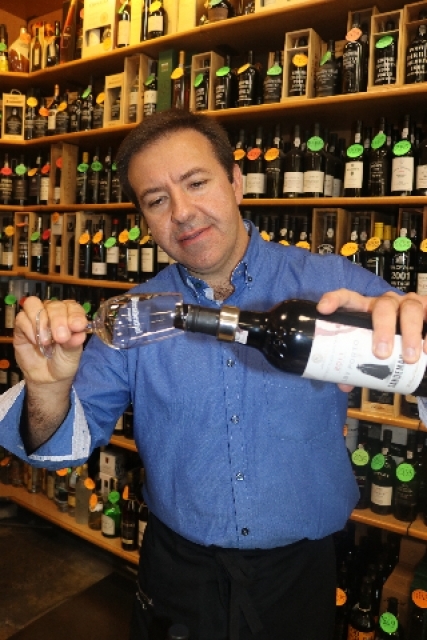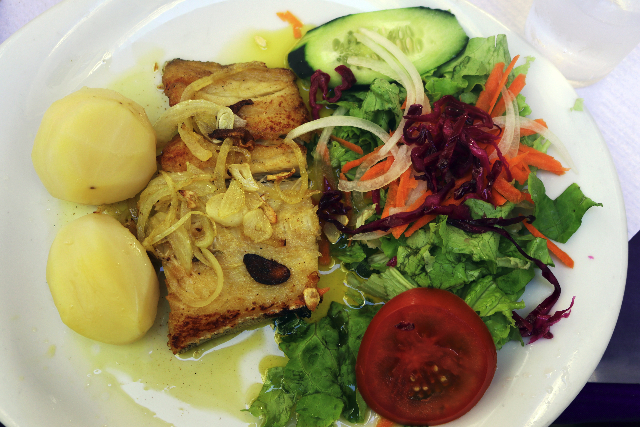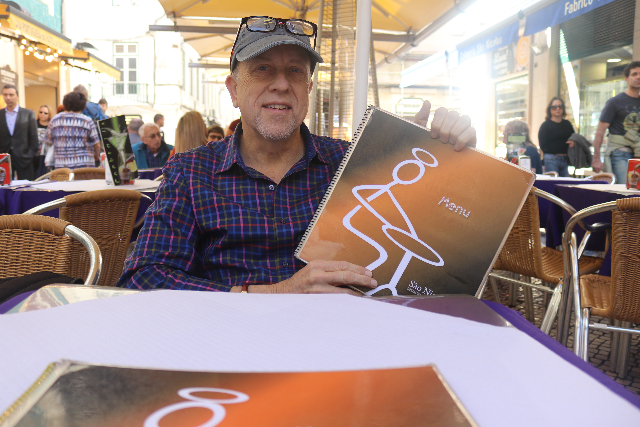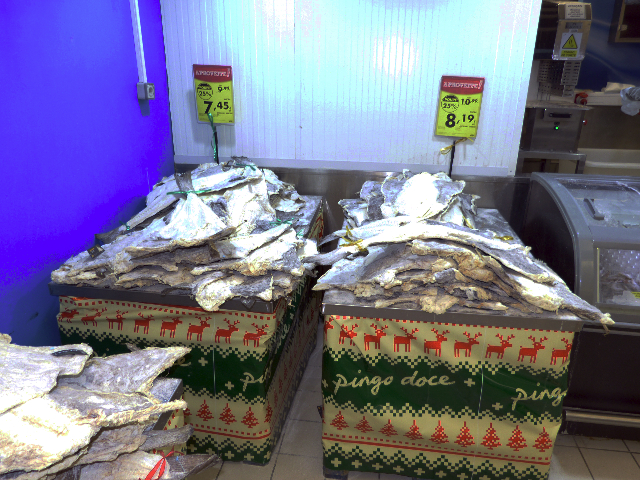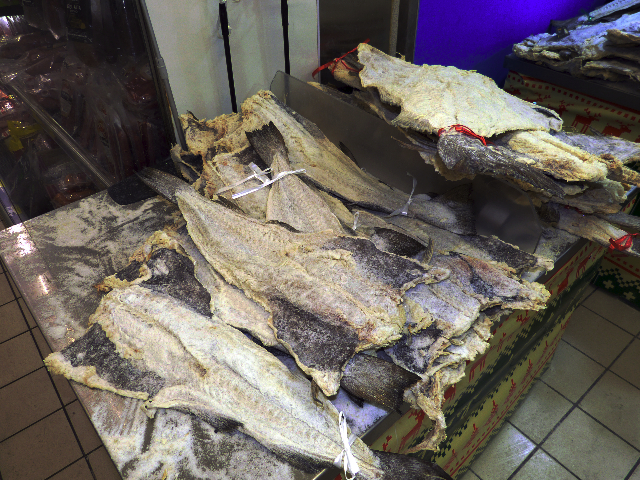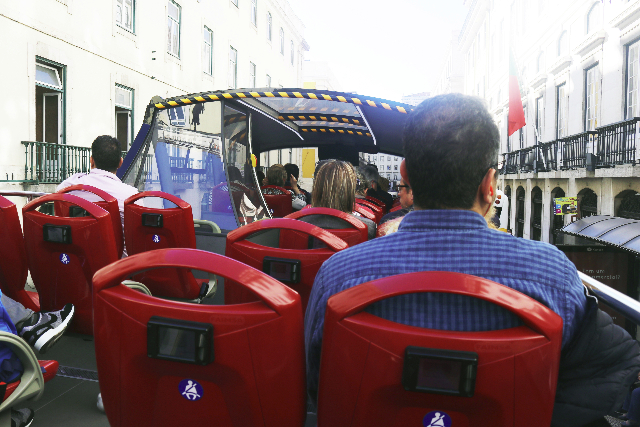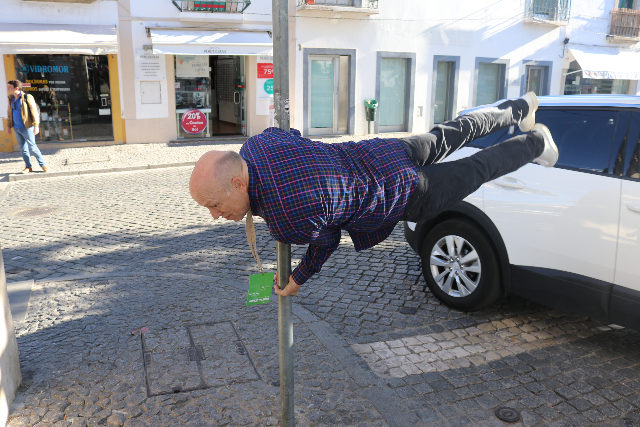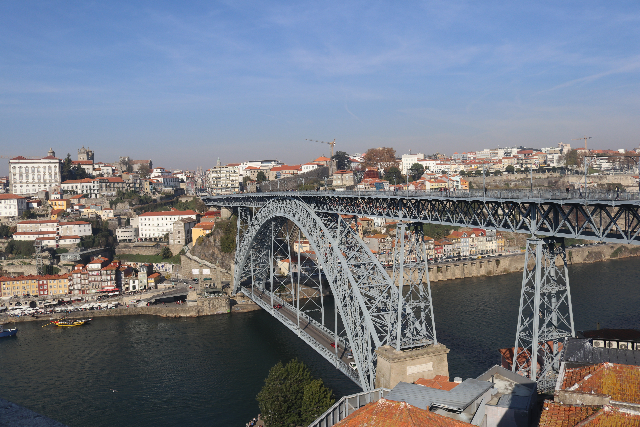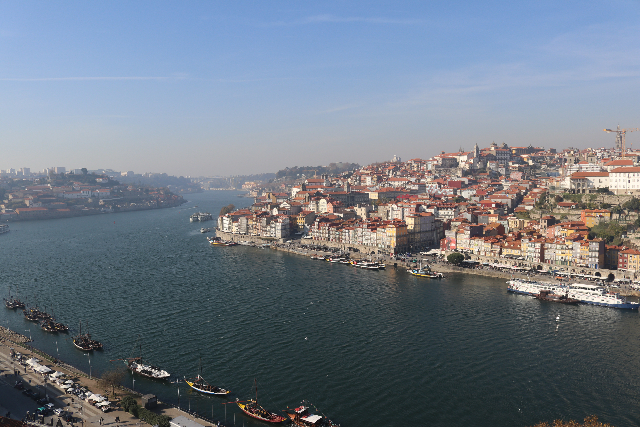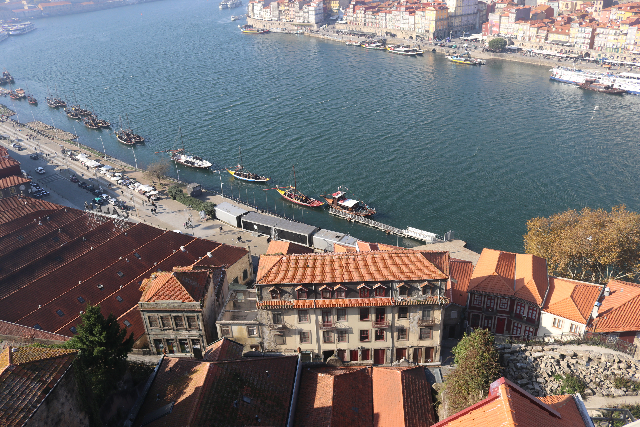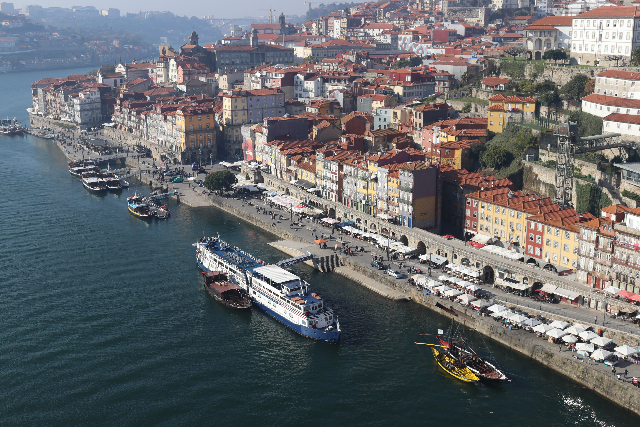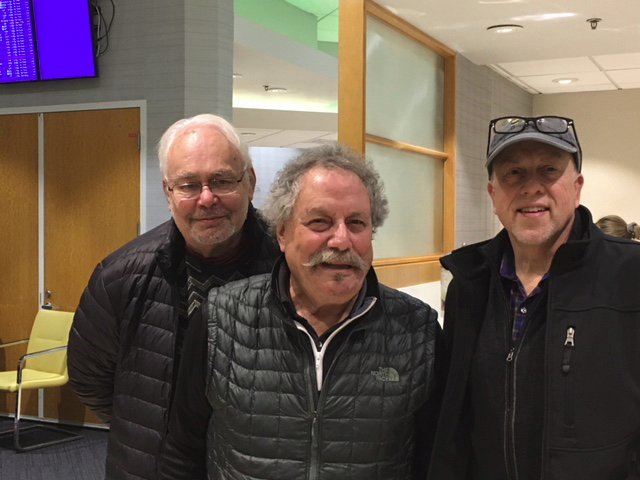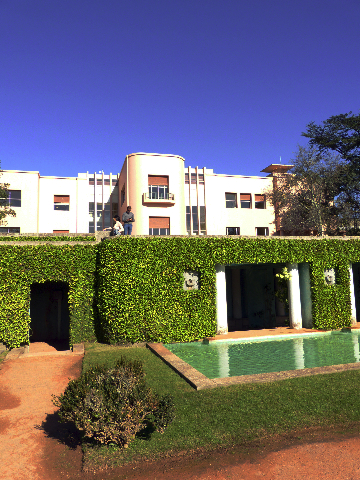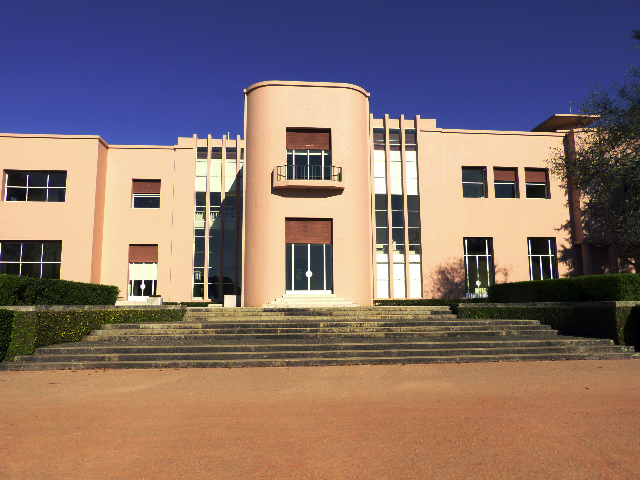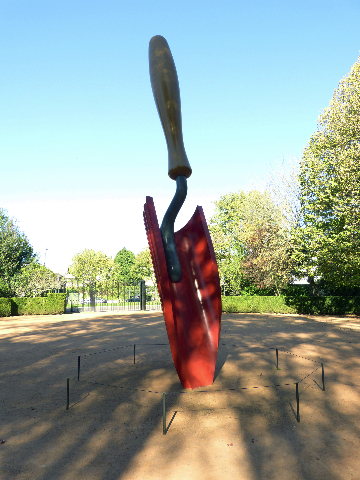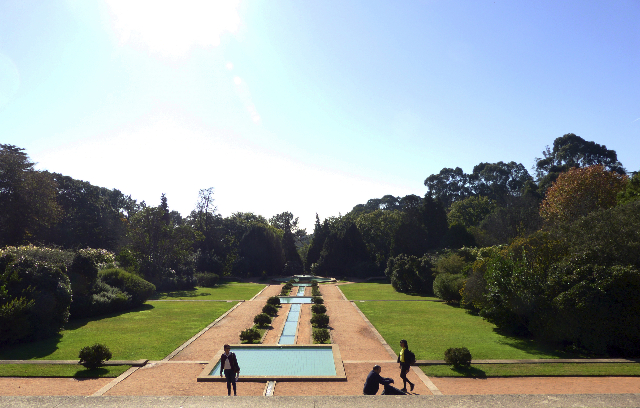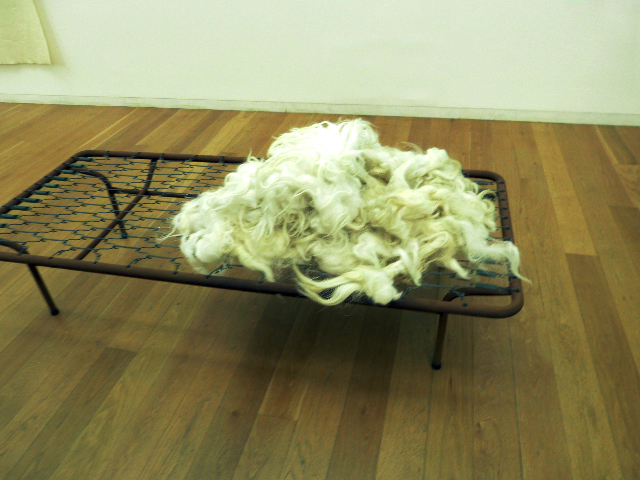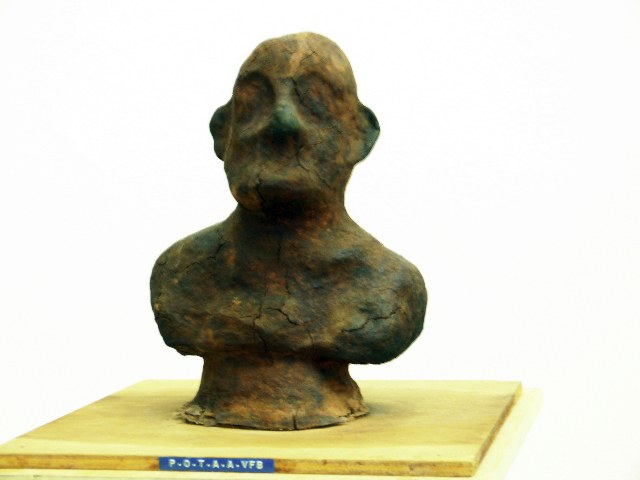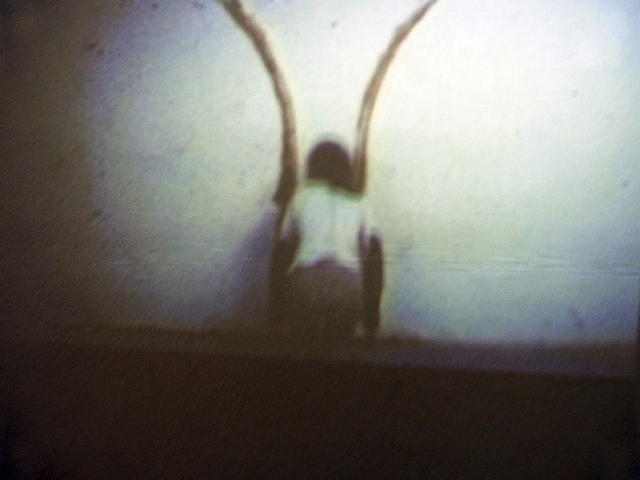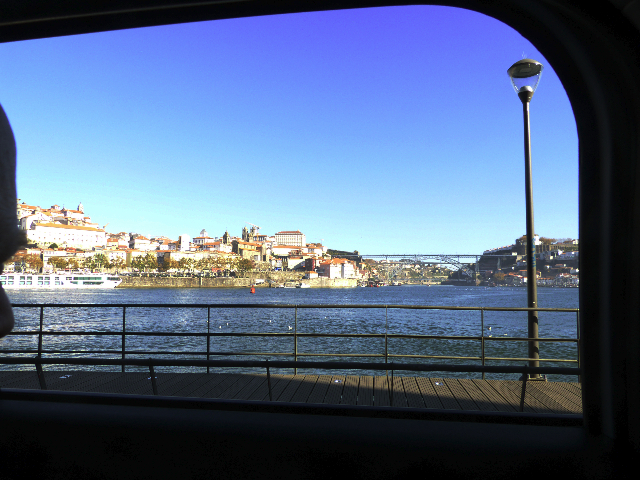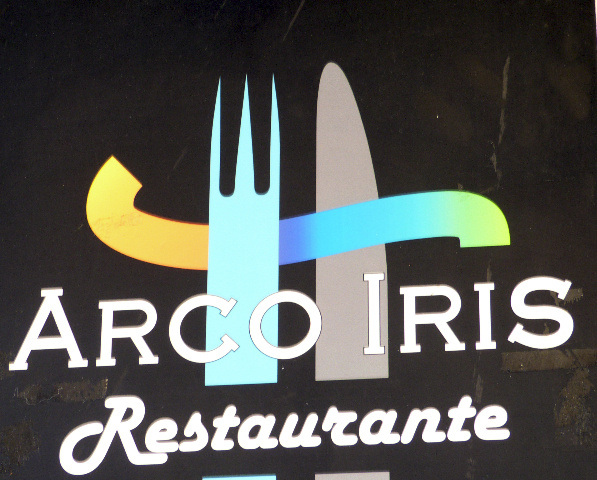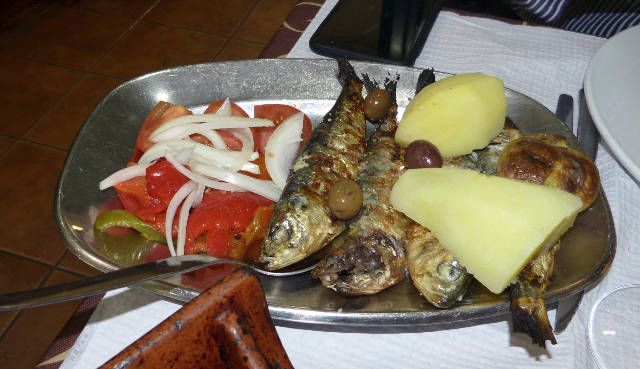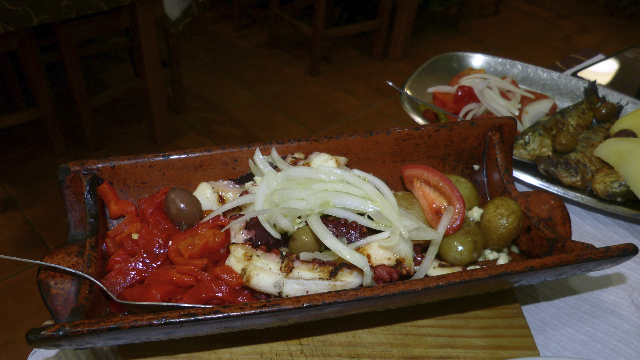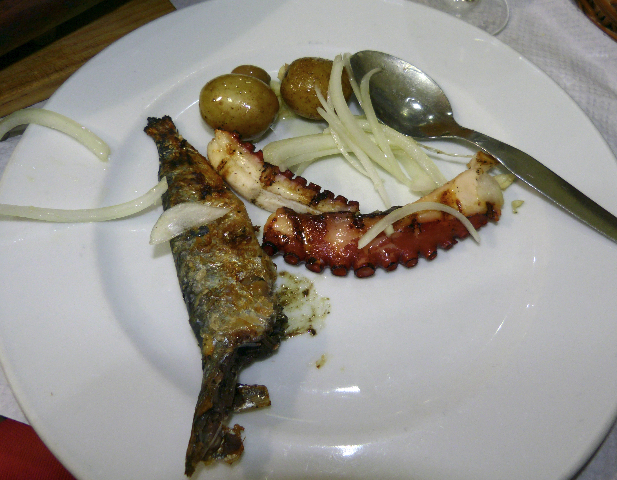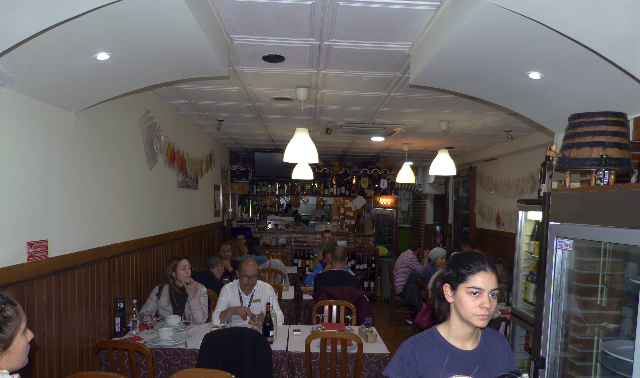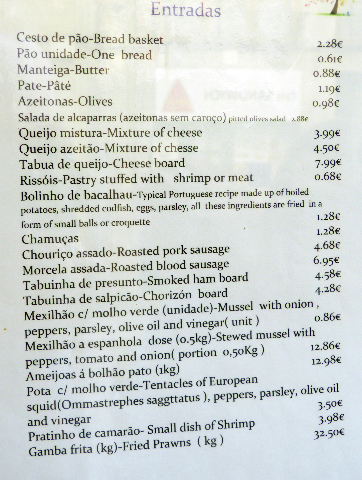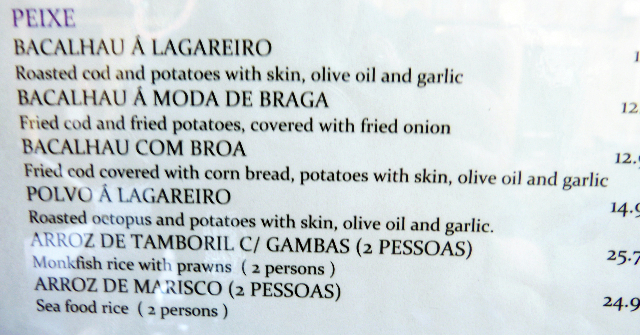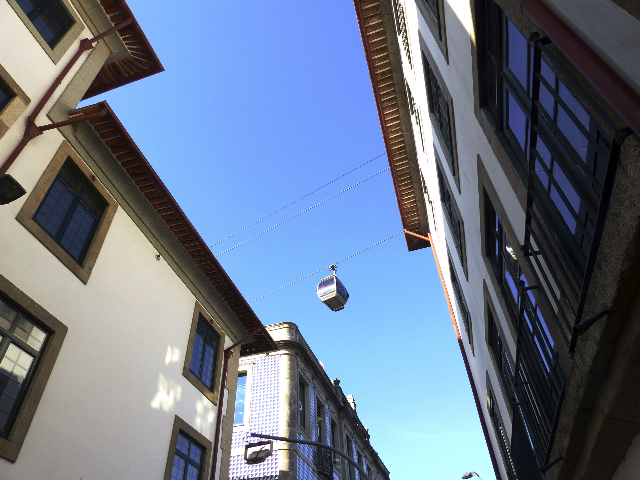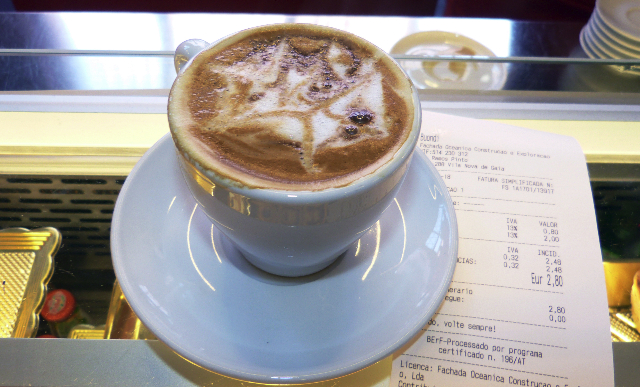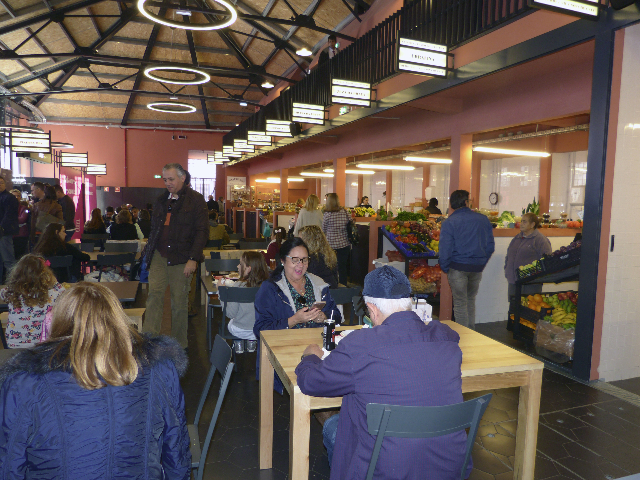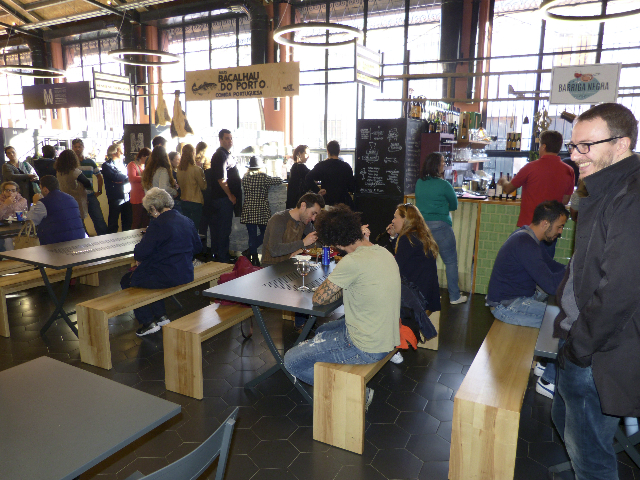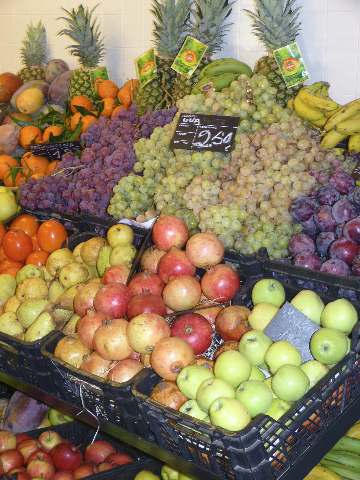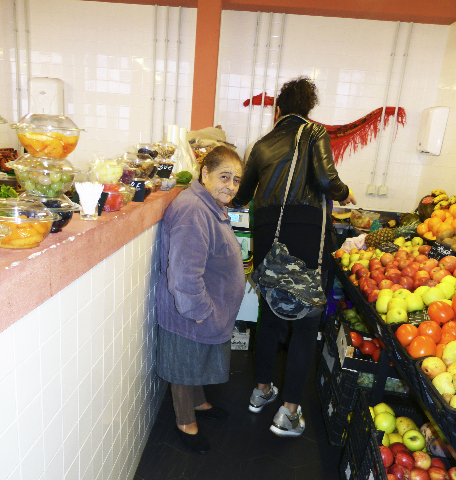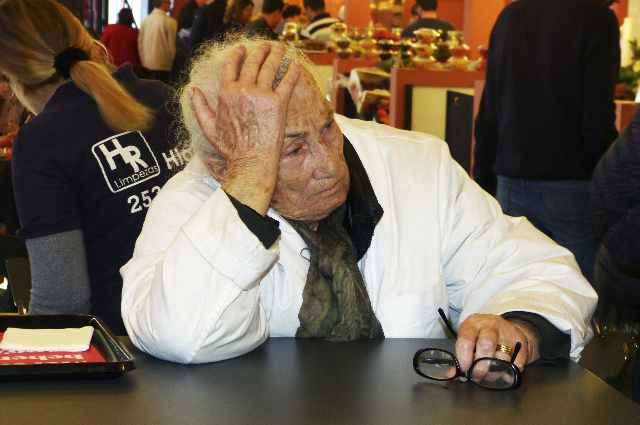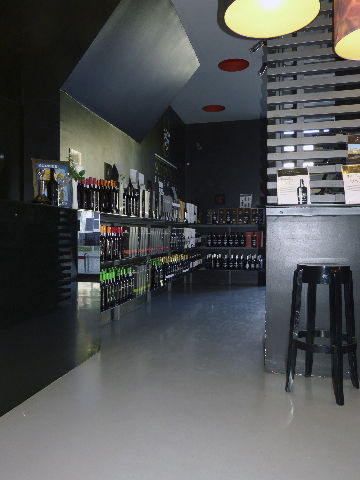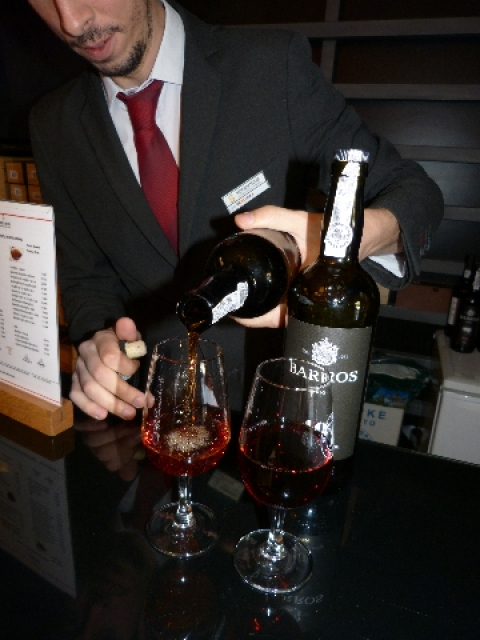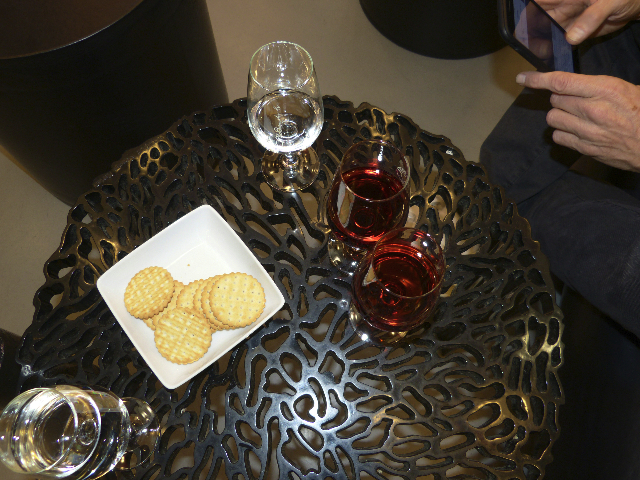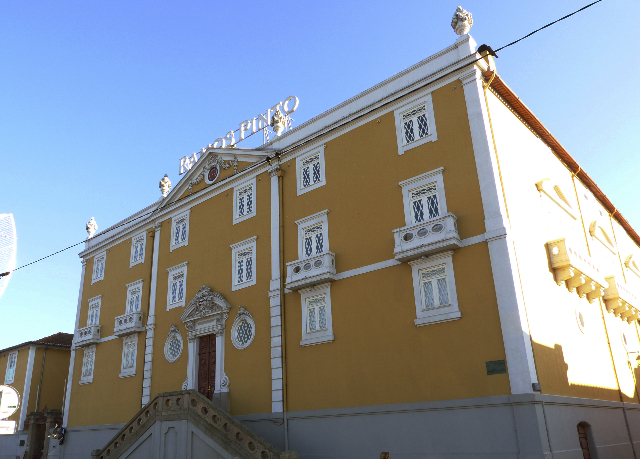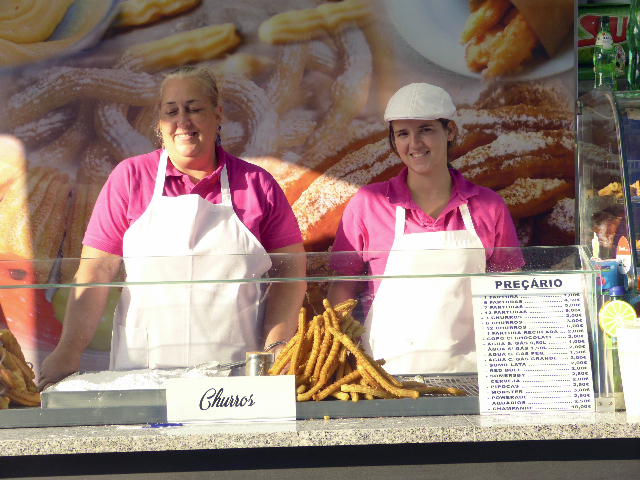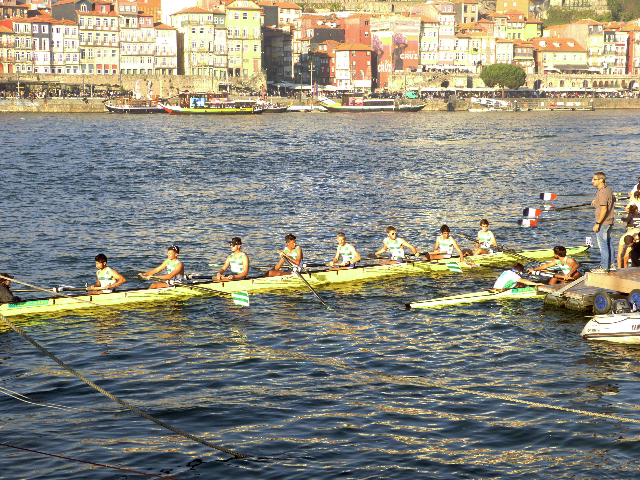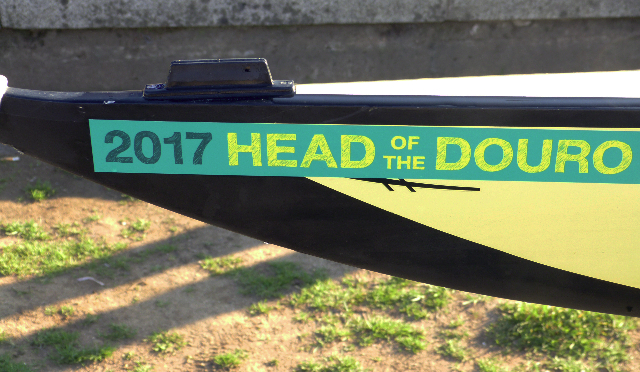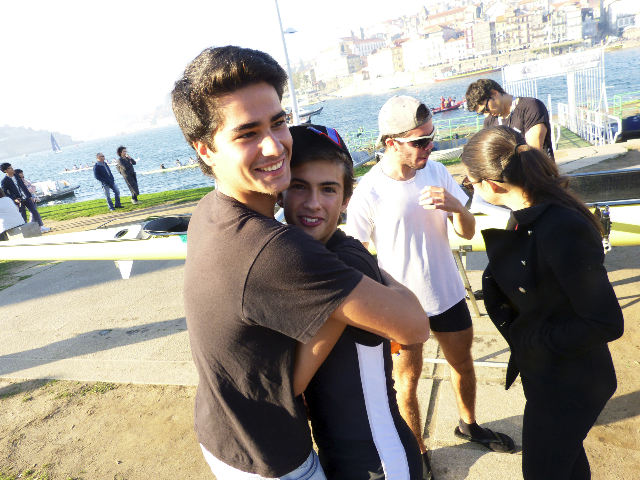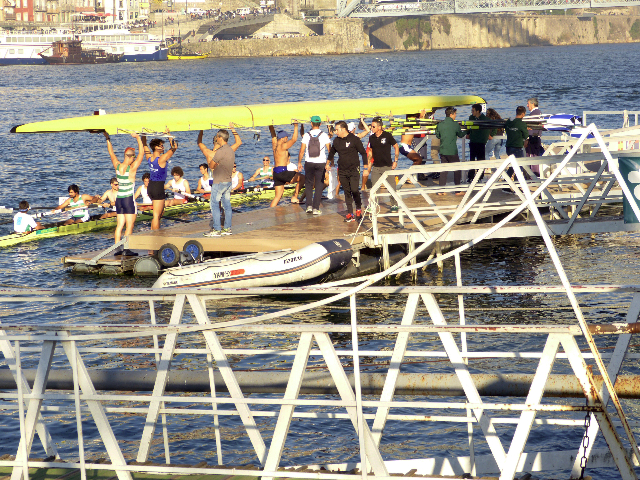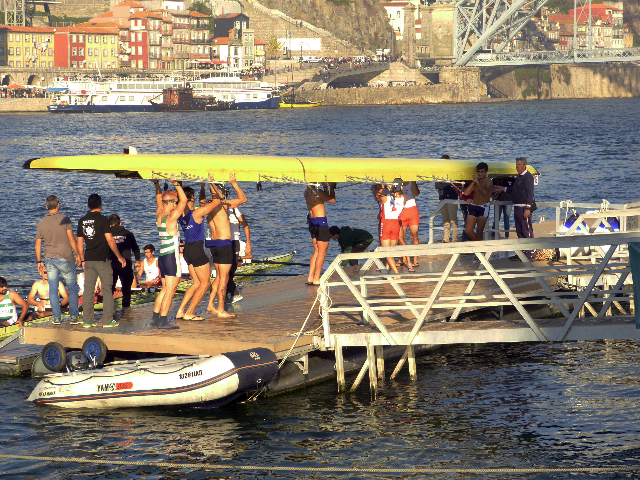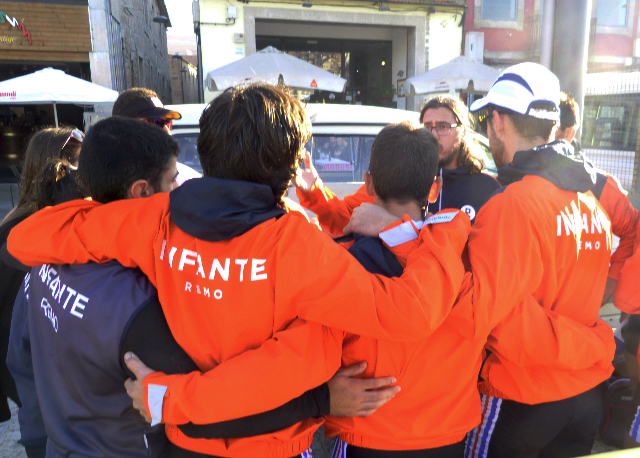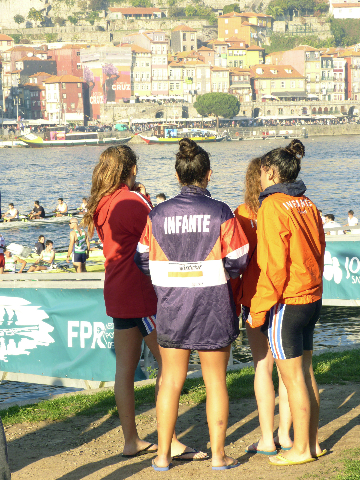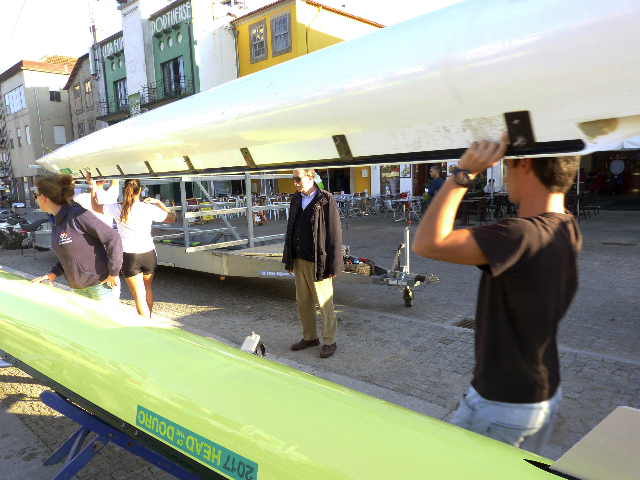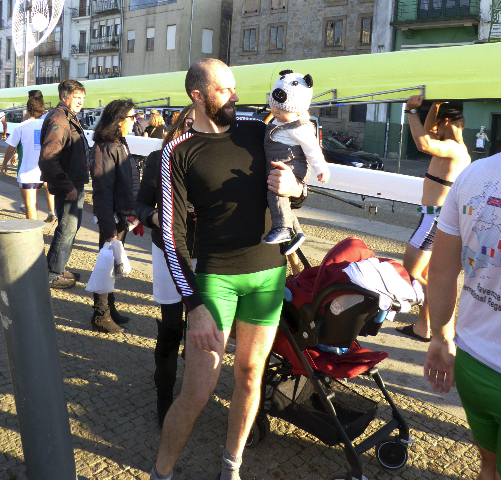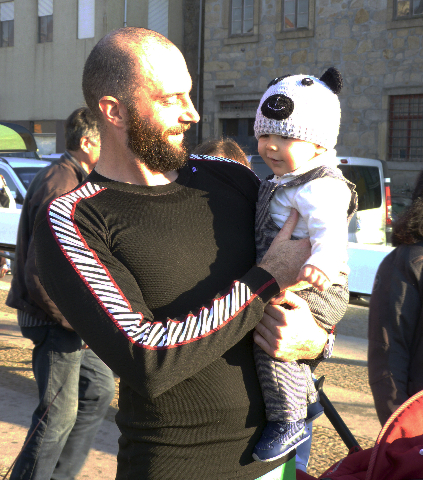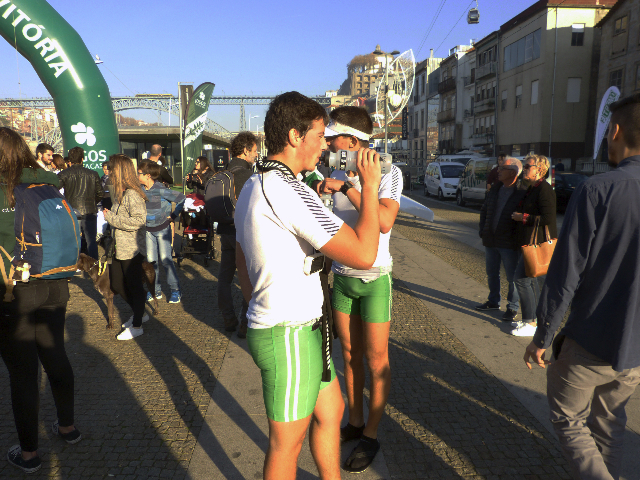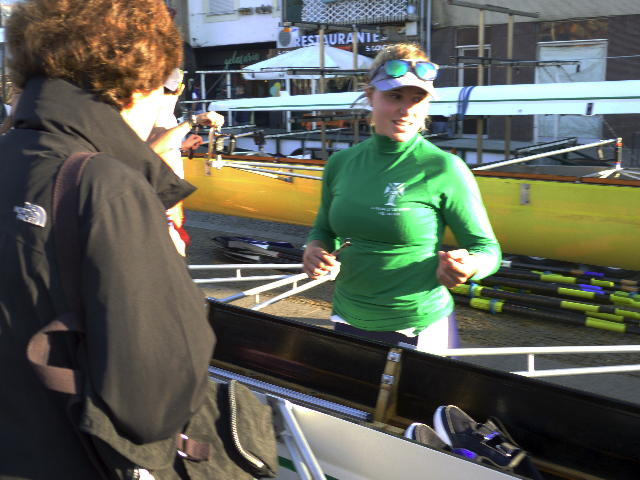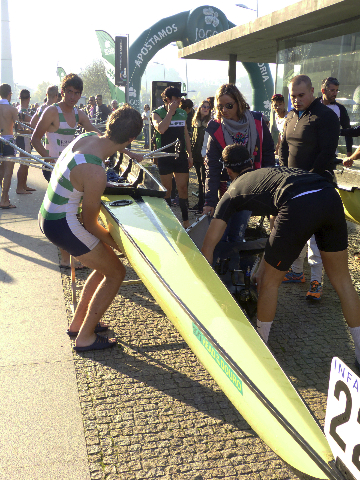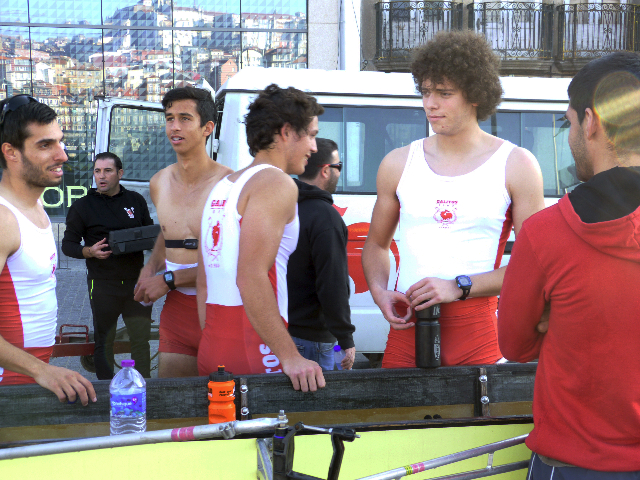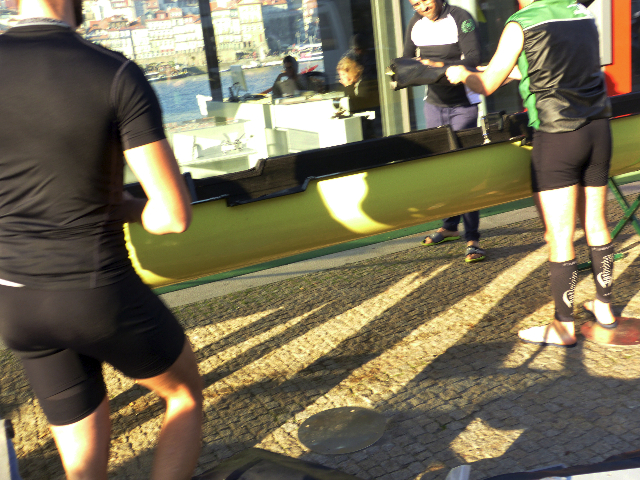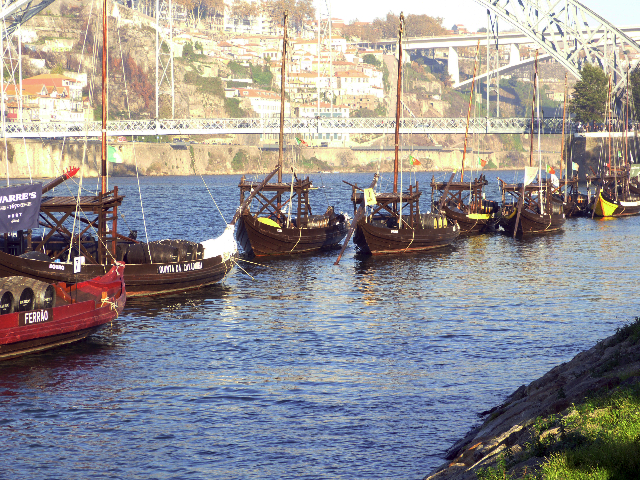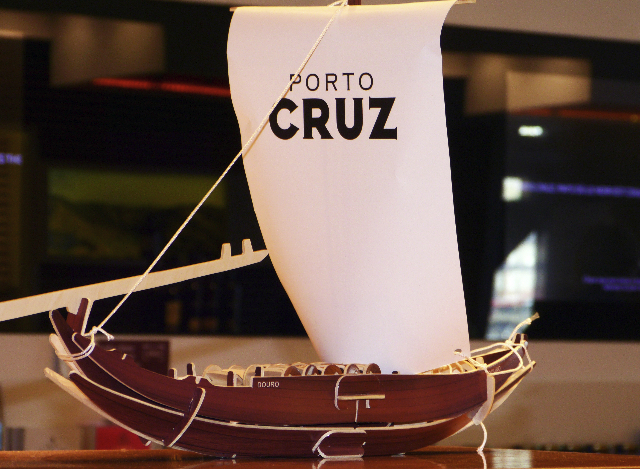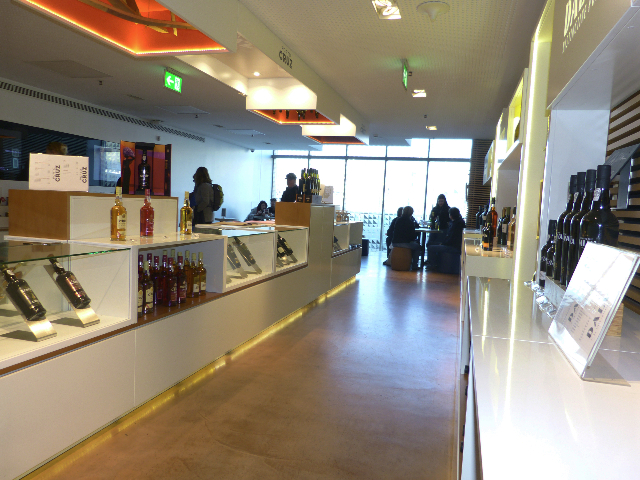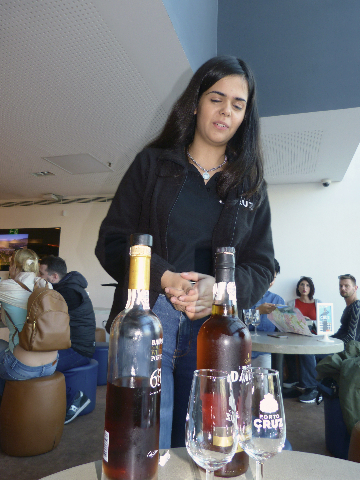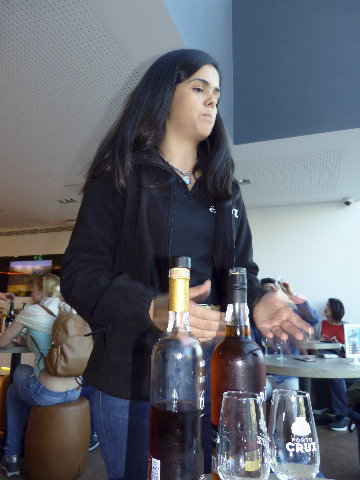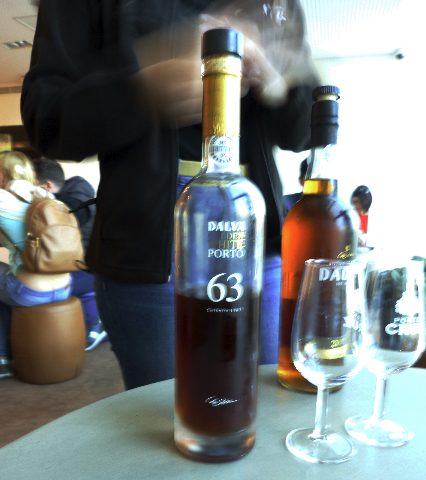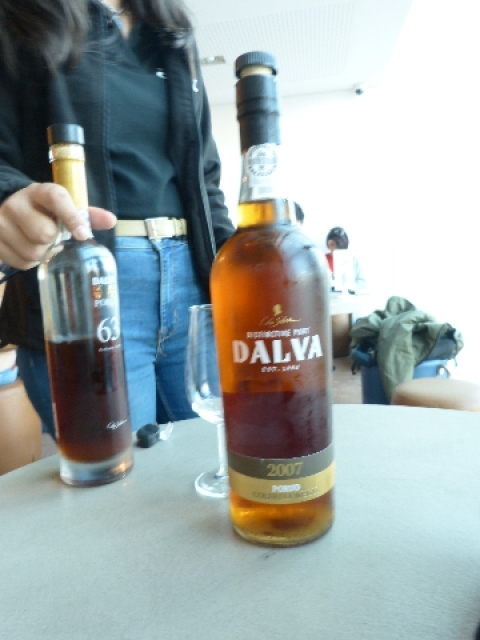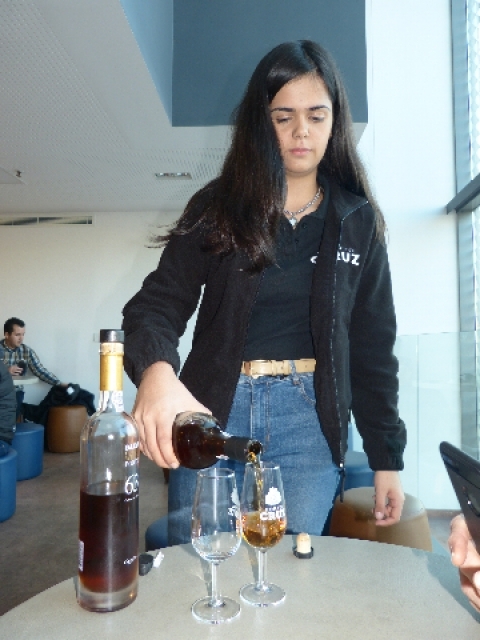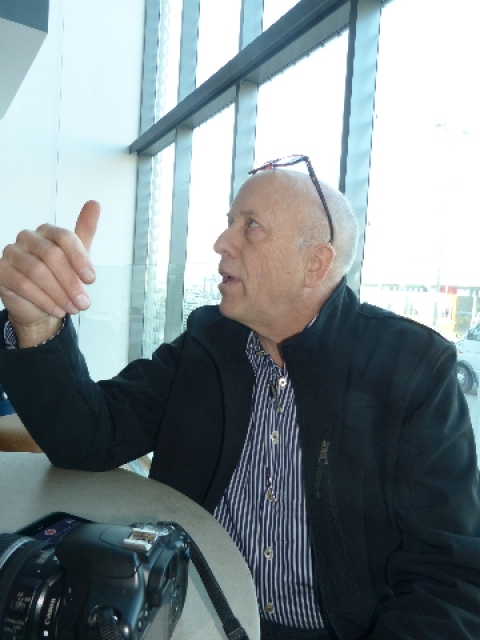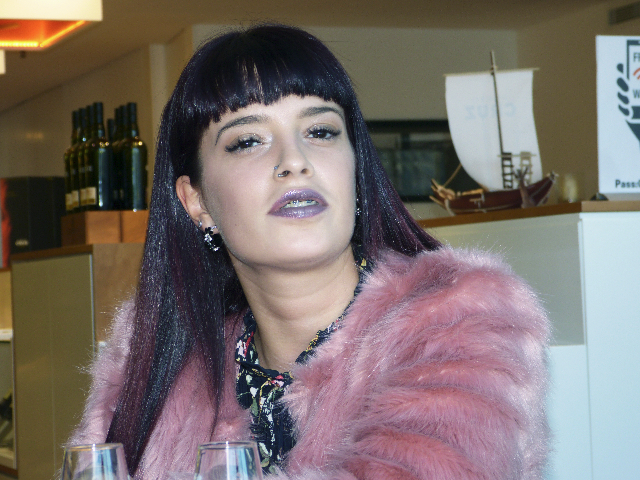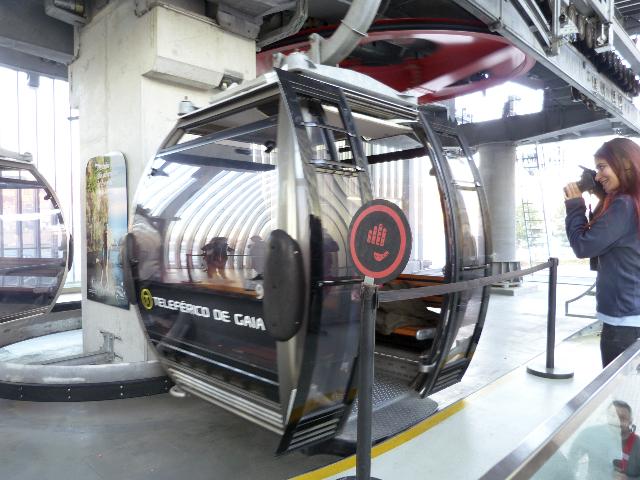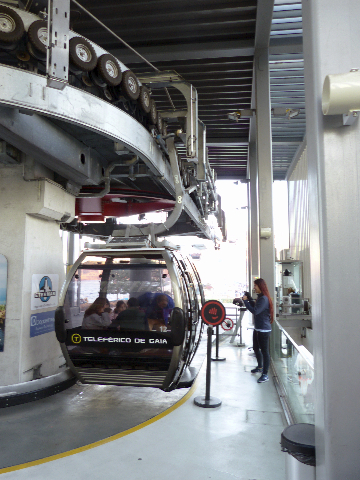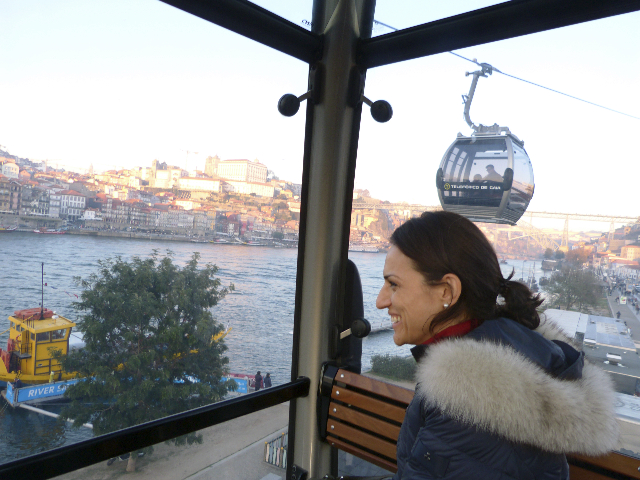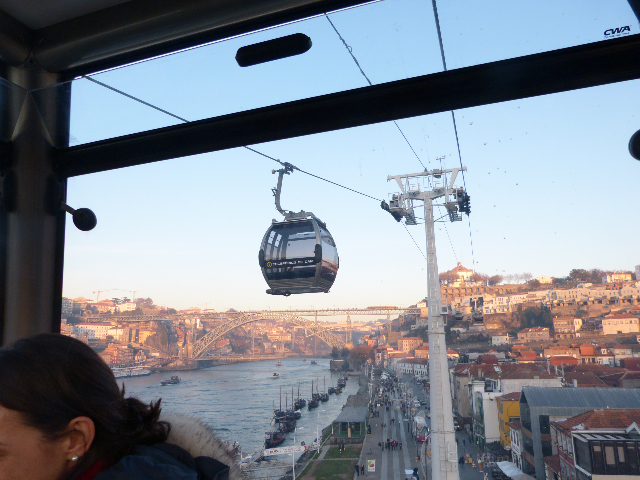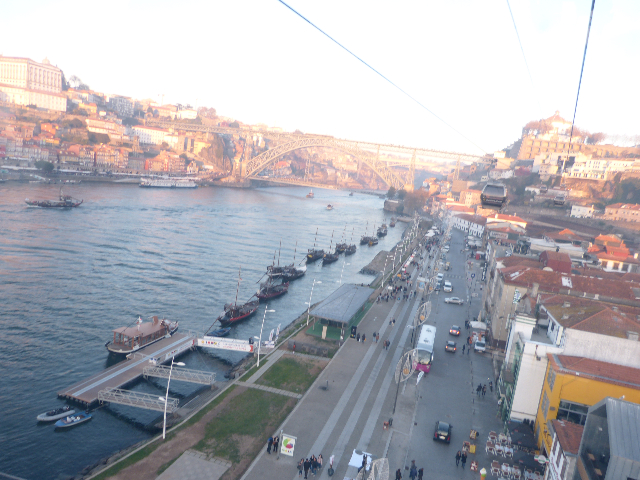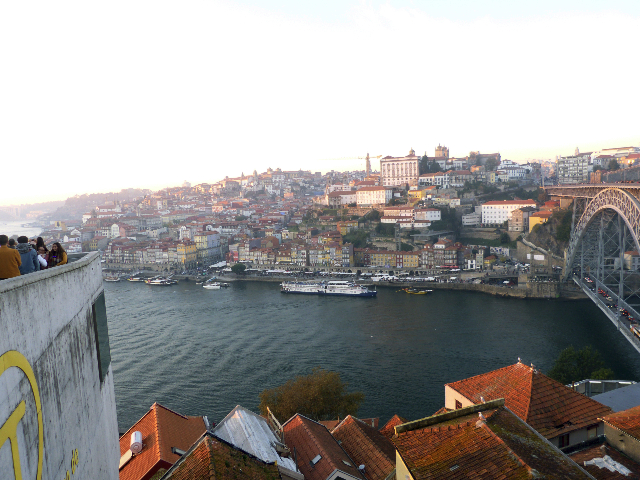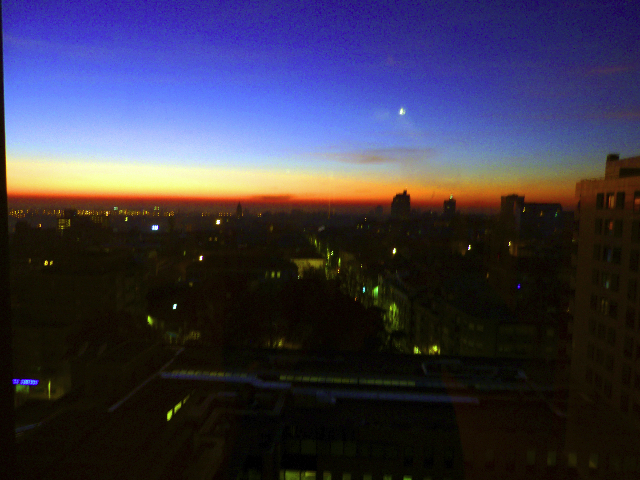Hanging Out With Brad Smith
In Search of Exquisite Port in Porto
By: Charles Giuliano - Nov 28, 2017
As a teenager I read all of Edgar Allan Poe including “The Cask of Amontillado.”
Binge reading had started with all of the novels in the Black Stallion series. It was a time in my life when I wanted to be a horse, cowboy, or ballerina. The latter after seeing Swan Lake at the former Boston Opera House on Huntington Avenue.
I had a wicked crush on Brookline Library's juvenile division librarian. She guided me through classics richly illustrated by N.C. Wyeth and Howard Pyle. With a flashlight under the blankets I devoured Hans Christian Andersen. The rough transition to adult book meant no more illustrations.
There were later obsessions with all of Aldous Huxley, Kafka, then in my 20's and 30's, F. Scott Fitzgerald and on to Ernest Hemingway. A couple of winters ago I read most of the plays of Eugene O’Neill and plan to get around to Tennessee Williams.
In recent years I read less, slower and more methodically preferring to feast on TV series on Netflix and Amazon while letting someone else do the driving.
The intent or conceit of all this is an absurd notion that devouring all those words or images, in some sense, makes one wise. I know folks who read tons of stuff, lapping up books like ravenous wolves who are, entre nous, thick as a brick.
It’s not words that make us wise but how we dwell on them and match text to our life experience. That may or not happen and is mostly serendipitous.
Like that Poe story in the lead, initially, intriguing for its Gothic horror but only now making sense to me. Other than a child's dinner portion of jug red, at that point in my life, I had yet to drink alcohol. The aftershocks of Poe's tale of a ravenous, mad, vengeful and tragic quest for the perfect cask of rarest sherry fell into place during my recent adventure, TAP Wine Tour of Portugal.
In this version of the tale Brad Smith, a connoisseur of port, was the Montresor to my stumbling Fortunato. He lured me sotted ever deeper into the caves there to brick me up in a metaphorical crypt. Not exactly, but with a bit of imagination, it's an analogy for a fascinating and complex adventure that I am still wrapping my head around. In that sense, Poe is a life ring tossed to a foundering miscreant blithered by days of tasting wines, dozens of them, from dawn to dusk.
That plays tricks with the mind and body. By bus and plane some 70 of us staggered about Portugal in pursuit of that ever elusive perfect vintage.
Nowhere are the subtle layers of perfection more evident than in the quest for the Holy Grail of port. The fortified wine may be stored for as long as a hundred plus years and goes through ever more phenomenal mutations. But that curve assumes starting with a vintage year. One must begin with great grapes. Decades will do little to enhance an ordinary or off year. Those lesser years are casqued longer and combined in blends. A ten or twenty year blend is in fact an average of several vintages.
They are perfectly enjoyable in the drawing room of one’s club while seated in leather chairs next to the hearth. It fleshes out an evening after dining on the daily roast from a trolley followed by pudding and cheese. We experienced this during a posh evening in Mayfair.
Blends are all well and good for a casual evening but hardly hint at the utter madness of a Dante and Virgil careening descent deep in the bowels of caves of port, warehouses of venerable firms with British names, and exclusive tasting rooms on the Gaia side of the Douro River along its mouth to the sea in Porto.
Last summer, I met Brad when Astrid and I were invited to dinner by wine, food, and travel writers, Phil Kampe and Maria Reveley. As is his manner Brad brought a number of rare and intriguing bottles for us to experience. This started with Cava, a sparkling wine in a colorful bottle, as well as unique wines of Greece and Sicily that are not exported. We tasted and discussed grapes which are only grown in those regions. With dessert he paired white port which is an unfamiliar guest at an American table. Other shades of port are ruby and tawny.
The evening unraveled like a cat playing with a ball of yarn. Astrid, who doesn’t drink but tasted the port, was the designated driver.
During our first day in Portugal there was a bus tour of Lisbon. Brad and I stopped for lunch at Sao Nicolau, an outdoor café. After which, using GPS on his phone, Brad tracked down two wine shops that had been recommended by friends.
One of these had hundreds of bottles. Brad soon established that he was not a tourist. As he explained to me that saves time. The mandate was to find rare and exquisite brands and vintages. Particularly, ones not available through American distributors. There was discussion here, and on other occasions, as to why that is. The answer is complex entailing availability and the lower sales, per capita, of the American market compared to Great Britain and its former colonies.
Fortified wines exported from Porto proved to be an immediate success with British consumers. They became investors and have dominated both production and consumption ever since. Initially brandy, a term of convenience, was added to stop fermentation and preserve sugar. It resulted in a sweet, dessert wine with high alcohol content. That entails a single glass after dinner while the sherry wines of Spain are primarily served as an aperitif or to fuel academic gatherings and literary functions.
Brad tells terrible jokes with a range of amusing accents, as well as, steady increments of his complex and colorful life. In a crowded room, or on the bus, you might overhear the jokes and anecdotes several times.
One-on-one, however, proves to be an entirely different story. His knowledge of port, and a range of other interests, are remarkably insightful and as deep as the Grand Canyon. A listener can hang on the edge and gaze down deep into the river of information that flows below.
Remarkably, in addition to being a colorful, eccentric and enthusiastic fellow traveler and guide he is generous to a fault. With both knowledge and insight as well as sharing destinations, secrets, and very, very expensive glasses of rare port. It is way above my pay grade but with the insidious after shock of creating a craving for such extraordinary experiences.
In that sense, Brad is a man on a mission to spread the story of Port and in so doing expand the American market. More than a connoisseur he is an ambassador of taste.
Not to assume that it was a one way street of master and grasshopper. He probed my interests and layers of expertise. There has to be mutuality for things to work.
By e mail on Saturday morning in Porto he invited me to join him for tasting in the afternoon.
During the last breakfast of the official tour, on Friday, I sat with Annabelle, a German journalist now based in Lisbon. It ensued that we had a mutual interest as art historians and modernists. She urged me to visit The Serralves Museum.
It opened in 1999 as a kunsthalle with special exhibitions of contemporary art in 14 galleries. They combine global as well as Portuguese artists.
The museum building was designed by the architect Alvaro Siza Vieira in the 1990s, and is located within the perimeter of Quinta de Serralves managed by the Serralves Foundation. The estate is also home to the Serralves House (Casa de Serralves), built in the 1930s. It is one of the major works of architect Jose Marques da Silva. There are wonderful formal gardens with descending pools and narrow coduits that reminded me of those of the Alhambra. There are sculptures sited on the grounds including a giant, polychromed trowel created by the pop artists Claes Oldenburg and Coosje van Bruggen.
I e mailed Brad that the museum was a priority. It opens at 10 AM and at 9:30 AM he pulled up to the hotel in a car with two Uber drivers. We arrived early and waited for the gates to open.
The installations included rooms of work by unfamiliar Portuguese artists but also objects by American minimalist, performance and conceptual artists. There were pieces that one does not often encounter such as a battered bed frame with a mass of cotton-like material on top by the Arte Povere artist Janis Kounellis. Vitrines contained artist books by Alan Kaprow, Robert Smithson, Fluxus artist, Al Hansen, John Cage and Matt Mullican. As always it was amusing to view a small, comical bust, in chocolate by the provocative German Artist, Dieter Roth. There was an early video of Bruce Nauman in a ritual performace pacing the perimiter of a square. Other American artists on view inchuded Ed Ruscha and John Baldesari. There was a Robert Morris felt relief.
That initiated a “what’s art about that” dialogue. The ball was now in my court with a discussion of what did and did not work for me. That focused on the originality and uniqueness of work I much appreciated and the derivative, provincial nature of much of what I did not.
With challenging tenacity Brad glommed onto the point and counterpoint of my critical process. Nothing was taken on face value without considerable backup. It had all the elements of Socratic dialectics. Through the engaging and fascinating day there would be reversals of the drift “I am not wise but you are so let us converse and I will have some of your knowledge.”
In the port rooms that would take the form of asking me why I preferred one glass to the other and why? Of course I had no vocabulary to express the explosion of flavor and after shocks of that just incredible 1963 white port. It would fall into the domain of what Herbert Maslow, a Brandeis professor, introduced to me as a “peak experience.”
On my end, I led Brad back to a video projection of very poor quality that he had walked by. It was a performance work I knew of but had never seen by Ana Mendieta. It conveyed the Cuban born artist, and widow of minimalist artist, Carl Andre, performing what proved to be a creepily prophetic act.
Dipping her hands in red pigment, a simulacrum for blood, she pulled them down a wall creating a wide V shape. I have seen works on paper of this piece. A few years ago we enjoyed a retrospective of her poignant and powerful work at the Barbican Gallery in London.
I explained to Brad the significance of the work transcending the poor quality of the video, with its particular relevance coming from the circumstance of her death. She was defenestrated following an evening of quarrel and intoxication. Andre was tried and acquitted of the charge of murder.
Of course Brad challenged this explanation. To which one may only respond that de gustibus non est disputandum. It is why discussion of aesthetics, from art to fine wine, is so complex, absorbing, confounding and fun.
Struggling to get a signal Brad managed to book another Uber driver. Along the way to the river bank and its port houses he pointed to the sites. These included ancient warehouses high on the ridge above the Douro River. The winemakers used boats, replicas are moored next to the banks, to sail barrels down river to be stored.
It was lunch time and Brad asked the driver to take us to his favorite restaurant. He recommended grilled sardines. But the roads narrowed and we proceeded on foot. I insisted on a restaurant on a side street rather than the tourist traps along the water. For me, fine food, at more affordable prices, trumps a view.
There was a hole in the wall, Restaurante Arco Iris, that I dragged him into. It had a table of brawny workers which is always a good sign. The intimate restaurant was filled with locals and proved to be one of my best dining experiences of the trip. One can, after all, endure only so many Michelin star meals before hankering for down home cooking.
As Bessie Smith, no relation to Brad, put it “Give me a pigfoot and a bottle of beer.”
I had grilled octopus, which was just simple and sublime, and he had the sardines. Both portions were beyond generous. We shared and both got to savor the fresh cuisine. The Michelin chefs had served octopus as well as every possible variation of salt cod, but failed to match fresh seafood served simple and plain.
For a coffee after lunch we visited the vast produce and dining court Mercado. There was a contrast between old women vending vegetables and versions of the young, chic and restless. It was a fun place to hang out and reminded me of Boston's Quincy Market.
We proceeded to the tasting rooms. The first was sleek, chic, and uninhabited even on a Saturday afternoon in November with summer-like weather. The server answered all of Brad’s questions and observations, trade talk, with suave aplomb. I was a fly on the wall as we tasted and discussed two glasses of Barros including a tawny port.
From there we went to a larger and busier venue, Porto Cruz, with lots of tourists. We found a small table and seats by a window with a view of the river. A delightful young woman, bursting with information and enthusiasm, served and discussed that remarkable 1963 white port. It seems that very little is left with a few bottles for more than 300 plus euros. Of course it is not in American wine shops but a bottle might be tracked down on line or at auction. For contrast Brad also ordered a 2007 Dalva. It provided a control baseline that revealed the truly spectacular qualities of the 1963 vintage.
Sipping that port, with its orgasmic oral impact, was one of the, Je ne sais quoi dire, experiences of this travel in Portugal, or my whole friggin life for that matter. At least wine wise.
By then it was late afternoon and Brad was headed up a steep hill to a venue he had never visited. It was time to part with plans to meet again in the USSA.
There was a festive mood along the river. The annual Head of the Douro regatta had just finished. Crews were taking their sculls to trailers. There was an enchanting bagatelle of cavorting young athletes.
Boarding the gondola I made my way to the top of the cliff with lasting but now fading impressions of an enchanting and intoxicating day in Porto.

